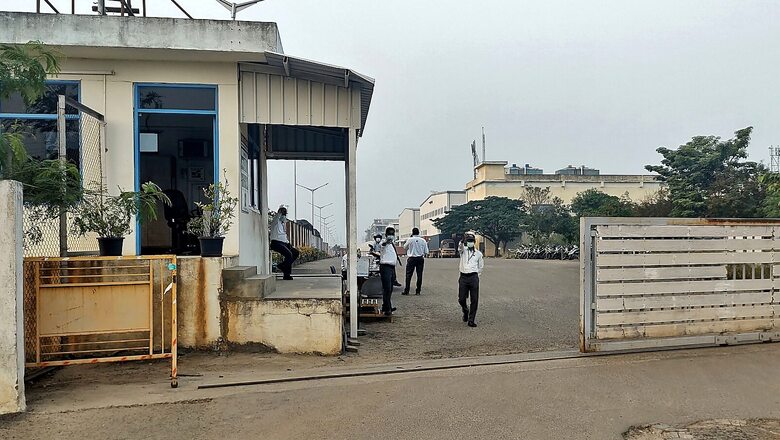
views
In recent years, a number of ‘Big Tech’ companies, to reduce their vulnerability to Beijing’s political whims, have sought to diversify their manufacturing by moving away from China. Some of these companies have established facilities in India as well, where the central and state governments are working in tandem to provide the necessary impetus to help such ventures succeed. After all, ‘Make in India’ has been the rallying call for India’s economic growth for the better part of the last decade.
Recently, at one such facility established by chip-making giant Foxconn in Tamil Nadu, there were large-scale protests and complete plant shut down due to poor working and living conditions of employees, as well as a case of widespread food poisoning which saw over 150 people hospitalised. The company officials, complemented by state agencies as well as other stakeholders, immediately swung into action to defuse the situation, address the causative issues and enable positive growth once again. A coordinated and encouraging response, which indeed augurs well for the future of foreign entities choosing to manufacture in India.
It is notable that since the beginning of the issue, to the partial re-opening of the plant on January 10, 2022, the entire issue has been covered by all sections of the media. Challenges of working in India, including socio-cultural aspects which needs to be addressed, have been examined in depth and a vast range of recommendations provided to ensure that the problems are overcome in a comprehensive manner. This is, however, not the way the Chinese media reported it.
Firstly, the Global Times — which serves as Beijing’s English language mouthpiece — immediately reported that Foxconn was increasing hiring in China because the India experiment had failed. Not only was this a ‘stretching of the facts’ but the alacrity with which the ‘tabloid’ chose to declare (wrongly) the demise of the Foxconn effort was telling.
The manufacturing unit in India is smaller than any of Foxconns’ units in China, and its production targets are less than 10 per cent of its Chinese counterparts at present. No Chinese manufacturing entity has been closed while setting up the India facility. Moreover, all the Chinese units had similar (and some had far worse) experiences at their nascent stages, but these were ‘put down’ in the normal ‘Chinese way’, quickly, quietly and ensuring profitability to suit Beijing! So why then did the Global Times jump so fast, and with such glee, at this news?
At first look, it seems Beijing’s talk of win-win does not really extend to cases where it does not get a slice of the pie. This, however, may be only ‘scratching the surface’. With shrinking space for continued state subsidies to reduce manufacturing costs — brought about by rising public debt, as well as growing international pressure on China’s leadership to ‘play fair’ on trade — it is possible that China may not continue to be the no-contest first choice destination for manufacturers in future. Moreover, with the new call for redundancies in global supply chains, most manufacturers will seek alternative destinations.
These are not good news for the Communist Party of China. Having failed to deliver the promises due in the Party’s centenary year (2021), there is a need to step up economic growth and public perception in the short term. It is possible that for some people in the CPC, this can only be achieved at the cost of other nations, which would explain the Chinese language media response.
On Weibo and nationally aired Chinese TV channels, the Foxconn crisis was portrayed as a complete disaster, owing to poor education, civic hygiene and incapability of Indians to deliver quality technology manufacturing. Some outlets even suggested that China should avoid importing items made in India as they would invariably be ‘unsafe’. The discussions on social media, without exception, concluded with the message that India could never compete with China for manufacturing.
Anyone familiar with China’s information ecosystem would know that such media and social media campaigns are normally steered and managed by the United Front Work Department or the Propaganda department. So, the widespread attention and commentary would reveal one important message — ‘the Foxconn facility in Tamil Nadu has China spooked!’
This is because India is among a small group of countries which has the essential elements to provide an ecosystem for manufacturing which not only rivals China, but also a culture of innovation which can leap-frog into the next generation of industrial development. True, in the past, this statement would have been a flight of fancy — to be beaten down by the bureaucratic and political landmines which dotted our landscape. But, if anything, the concerted response by all stakeholders, public and private, in the Foxconn crisis gives one great optimism for the future.
Strangely, neither the re-opening of the plant nor the reaffirmation of commitment to its success by the government seems to have caught the Chinese media’s eye. Hope the Global Times is aware that it cannot wish away the rise of India’s industry with its usual bag of tricks.
Aditya Raj Kaul is Contributing Editor with more than a decade-long experience in covering Conflict, Foreign Policy and Internal Security.
Read all the Latest Opinions here

















Comments
0 comment